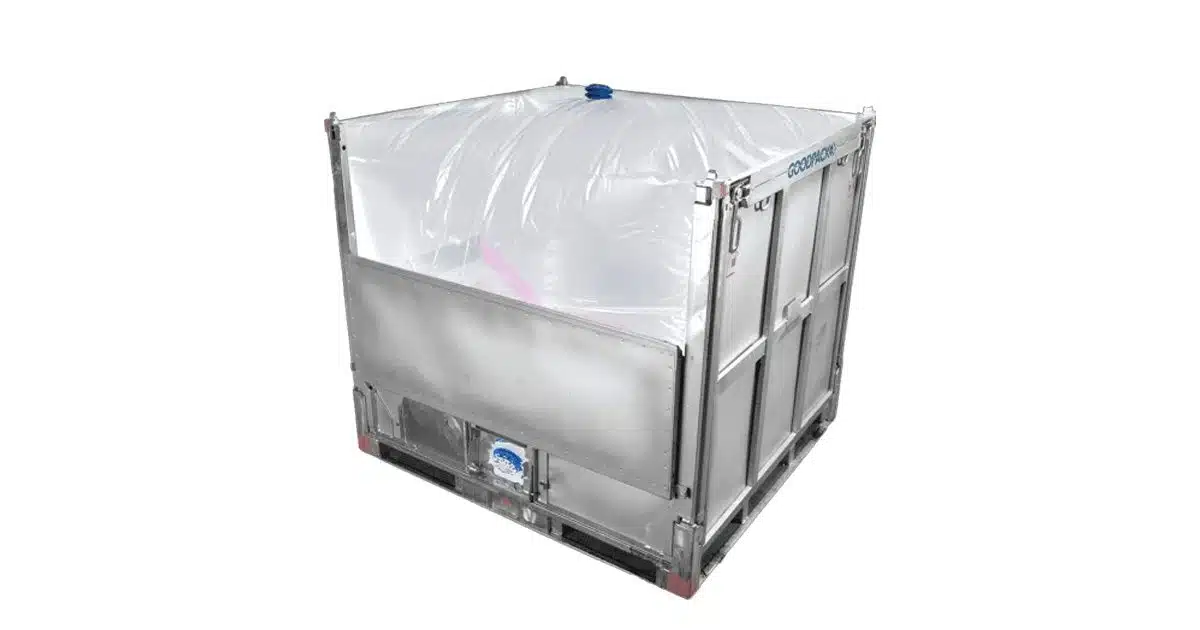Intermediate Bulk Containers (IBCs) have become a standard choice for transporting and storing liquids across multiple industries. Their efficiency, stackability, and reusability make them an essential tool for global logistics. However, without the right safeguards, these containers can expose liquids to contamination, leakage, or material degradation. This is where protective container liners and supporting IBC packaging materials play a critical role. Understanding why IBCs need these liners helps businesses improve safety, protect product integrity, and streamline shipping operations.
The Purpose of Protective Container Liners
Protective container liners serve as a barrier between the liquid product and the inner walls of the IBC. This prevents direct contact with the container, reducing the risk of contamination, corrosion, or product absorption into the container material. A polypropylene container liner, for instance, offers a clean, durable surface that supports hygienic bulk transport for industries ranging from food and beverage to chemicals and cosmetics.
Using a liner also means containers can be reused more efficiently. Instead of requiring extensive cleaning and sterilization after each use, companies can simply replace the liner, cutting down on turnaround time while minimizing water and chemical waste.
The Role of Bulk Liquid Packaging Components
Protective liners are part of a broader family of bulk liquid packaging components that work together to create a complete system. While liners form the inner layer of protection, they are complemented by accessories and structural parts such as IBC dunnage boards, IBC base pads, and IBC top lids. These components ensure that the container remains structurally sound during transport while also securing the liner in place.
Open top liners are another example of how packaging components can be tailored to meet specific handling and filling needs. Designed for easy installation and removal, they provide flexibility for companies working with varying types of liquids, viscosities, or operational environments.
How Protective Container Liners Improve Bulk Liquid Shipping
Protective liners play a direct role in improving the safety and efficiency of shipping bulk liquids. They provide an additional layer of defense against punctures, temperature fluctuations, or environmental exposure. By reducing the risk of leaks or spills, liners also protect surrounding cargo, reduce liability, and ensure compliance with industry safety standards.
For an in-depth look at the benefits, explore this resource on How Protective Container Liners Improve Bulk Liquid Shipping. It outlines how liners integrate with IBC protective packaging supplies to enhance every stage of the logistics process.
Why IBCs Depend on Accessories and Packaging Supplies
An IBC liner alone is effective, but when paired with the right accessories, it becomes part of a stronger protective system. IBC dunnage boards distribute weight evenly to reduce stress points on the liner. IBC base pads cushion the container’s foundation, reducing wear during transport. IBC top lids and IBC container lids ensure that contaminants cannot enter from above, maintaining a closed, sterile environment throughout shipment.
Together, these IBC protective packaging supplies allow companies to extend the lifespan of their containers, reduce the chances of damage, and maintain high-quality standards for their products. This comprehensive approach to packaging materials ensures that businesses not only protect their liquids but also operate more cost-effectively.
The Sustainability Advantage of Using Liners
One of the less obvious benefits of using protective liners is sustainability. By reducing the need for heavy cleaning, liners help cut down on water use, chemical detergents, and energy consumption. They also support container reuse, which minimizes single-use waste. In industries where environmental responsibility is increasingly important, incorporating polypropylene container liner solutions into logistics helps reduce a company’s overall carbon footprint.
Industry Applications That Rely on IBC Liners
Food and beverage manufacturers use protective container liners to ensure that syrups, juices, and oils remain free from contamination. Chemical companies rely on liners to contain hazardous liquids safely. Cosmetic producers use them to transport lotions and creams without degradation. Even the automotive industry benefits from liners when shipping lubricants, antifreeze, and other fluids that demand clean, reliable packaging.
In each of these applications, the goal remains the same: protect the integrity of the product while ensuring efficiency in shipping and storage.
Choosing the Right Packaging Materials for IBCs
Selecting the right protective container liner and accessories depends on the type of liquid being shipped, the duration of storage, and the conditions of transport. Factors such as temperature sensitivity, chemical compatibility, and filling or dispensing methods all influence which liner and components are most appropriate.
For companies looking to make informed decisions, the Comprehensive Guide To IBC Packaging Materials And Components is a valuable resource. It provides insight into the wide range of liners, lids, boards, and pads available to create a secure and efficient IBC packaging system.
Why Partner with Innovative Liner Solutions
Protecting bulk liquid shipments requires more than just a container. It requires a system designed around cleanliness, safety, and efficiency. Innovative Liner Solutions provides not only high-quality protective liners but also the full range of IBC packaging materials, from IBC dunnage boards to IBC container lids. Their expertise ensures that businesses in food, beverage, chemical, cosmetic, and automotive industries can count on reliable solutions tailored to their needs.
Conclusion
IBCs need protective container liners because they safeguard the liquid contents, simplify container reuse, and strengthen the overall shipping system. By working in tandem with bulk liquid packaging components like IBC base pads, open top liners, and protective lids, liners transform IBCs into secure, hygienic, and cost-effective solutions. For companies that rely on large-scale shipping and storage of liquids, integrating these protective elements is not optional—it is essential.
For expert guidance on IBC liners and protective packaging solutions, contact Innovative Liner Solutions today at (815) 963-9525.


